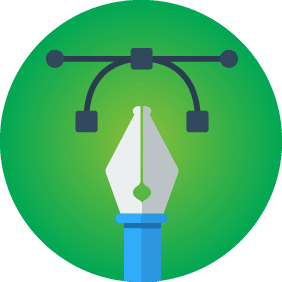 Every website has a purpose and that is to convert. A conversion might involve the visitor buying a product or a service from the site, or asking for a quotation, or filling in his/her contact details to ask for more information or it could involve some other action. Before beginning the process of designing a website, the owner of the site, and the designer tasked with creating the site, sit across the table and work out the objectives of the site and how to go about achieving these objectives through the website’s design. It is the conversion ratio of the site that helps determine whether the website was able to meet these objectives or not. So, in effect, all website design must be conversion friendly if it website must achieve its objectives.
Every website has a purpose and that is to convert. A conversion might involve the visitor buying a product or a service from the site, or asking for a quotation, or filling in his/her contact details to ask for more information or it could involve some other action. Before beginning the process of designing a website, the owner of the site, and the designer tasked with creating the site, sit across the table and work out the objectives of the site and how to go about achieving these objectives through the website’s design. It is the conversion ratio of the site that helps determine whether the website was able to meet these objectives or not. So, in effect, all website design must be conversion friendly if it website must achieve its objectives.
But, at times, in spite of the designer’s best efforts, the website doesn’t experience a high conversion ratio. This is usually because the designer has made certain designing errors that have led to a decrease in the conversion ratio. The mistakes have brought down the website’s credibility and appeal in the eyes of the shoppers, leading to higher website abandonment.
So what are these mistakes? Let’s take a look:
1. Poor Font Style and Size
Have you come across a site where you couldn’t make out what was written on the page? This is a textbook case of not giving attention to the readability of the site. This mistake occurs as a result of the designers focusing too much on choosing a font based on its visual appeal rather than its readability. What’s more, they either make the font size too big or too small, which again makes it difficult to make sense of the text. Imagine what would happen if you come across such sites with poor font selection. You will close it and go on to some other site, right; this is why the conversion ratio of sites with poor font selection goes down.
2. Visuals that Assault the Eyes
In an effort to make a site as visually appealing as possible, designers tend to make use of visuals that are not easy on the eyes and their brightness and garishness is like an assault to the senses. When a visitor opens the site, the number of images, overwhelms his senses and he needs time to adjust to all the visuals on the site that are trying to catch his attention. This is again something that takes the quality of the website down, which in turn affects its conversion ratio.
3. Letting Pop-ups Have a Free Run
Now, there is a school of thought that says pop-ups ruin the user experience of a site. There are others who say designing pop-ups that pop up at the right time improve the intuitiveness of the site. Let’s just say that the truth lies somewhere in between. A pop-up shouldn’t be used for the heck of it and all the time. If it is used to enhance the delivery of the website’s message and help a visitor make informed decisions, well and good; but if it is used for no particular reason, it mustn’t be used. Such pop-ups interfere with the visitors thought process and also come across as distractive elements. Also, visitors do not appreciate a website in which pop-up ads appear on the screen all the time. This is again a mistake that needs to be avoided at all costs.
4. Irrelevant Images
You will be surprised to know that people are affected by the images used on the site. If the images have emotive appeal, then a look at the images prompts the visitor to perform certain call-to-action tasks on the site. But, if the images are completely irrelevant to the purpose of the site, they are put off, and might just move on to another site. The mistake of choosing irrelevant images occurs when designers’ shows little concern for the quality of images on their site. They take the visitors for granted, thinking they can use an image and still get away with it. But that doesn’t happen. The right images leave the right kind of impact, but the wrong images, leave the wrong impact. This is why you must use only relevant images on a site.
5. Lack of Contact Information
This is something that affects the conversion of a site big time. Sometimes, web designers completely ignore ‘contact us’ pages, thinking they play an insignificant role in the overall success of a website. But that’s where they are wrong. Website visitors make it a point to take a look at the ‘contact us’ page of a site, irrespective of whether they were impressed by the website or not. It is this page and the information on it that lends credibility to the site, so it mustn’t be ignored. Its design must be professional and the contact information must be presented in a clear and to-the-point manner. What’s more, the information on this page must be comprehensive. If you don’t want your website’s conversion ratio to be bogged down by a lack of credibility, you must give importance to its ‘contact us’ page.
The Wrap
These are definitely not the only mistakes that bring down the conversion ratio of a website. As a website designer, you must keep your eyes open and look for anything and every element that has the potential to bring down designing quality and avoid it like the plague. You must take every step with careful thought and attention. Make sure you are well aware of what you are doing and the merits and demerits of your designing choices. Do not adopt a technique just because somebody else is doing it. You need to form your own opinion about things and make choices based on the needs and requirements underlined in the project brief. As a designer, it’s important that you do not follow the herd mentality. Make designing choices that you feel are the perfect fit for your website. This will ensure you will make fewer mistakes.
August 30, 2013









